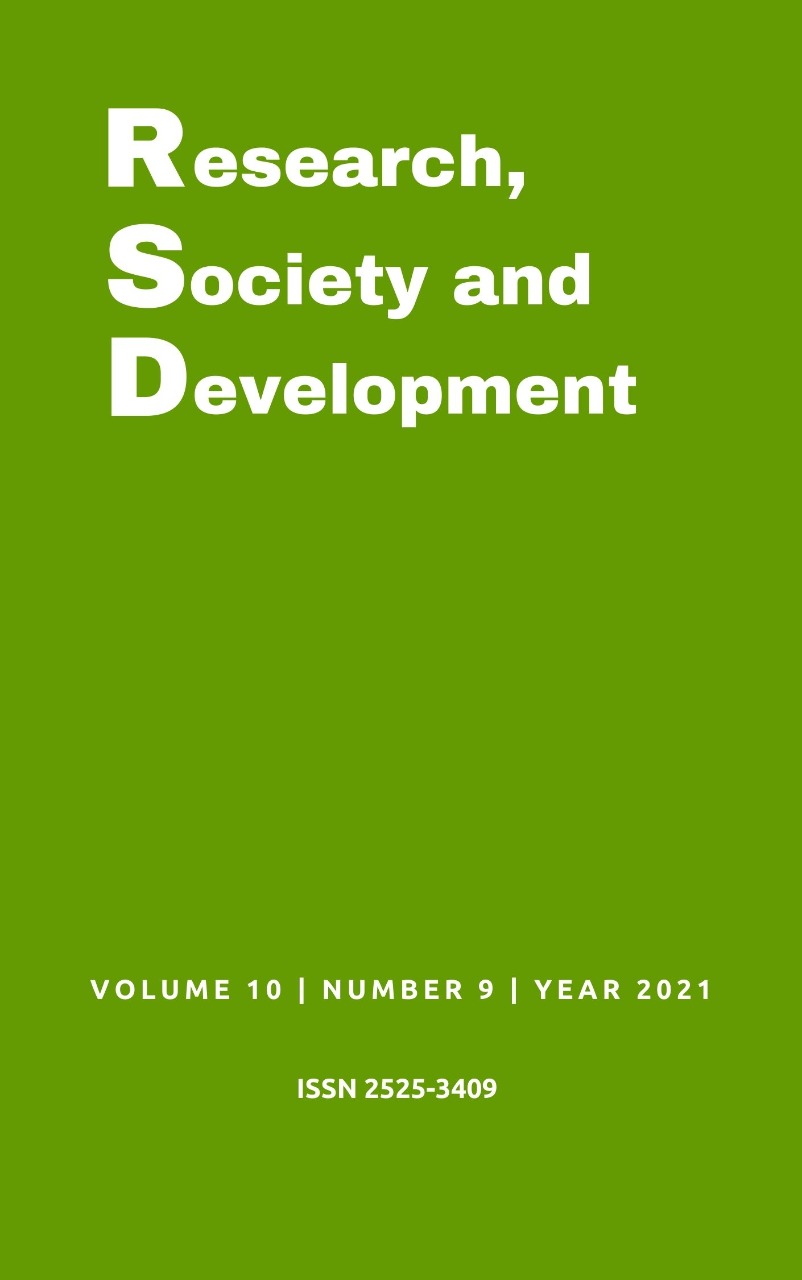Physical exercise and deafness: A integrative review
DOI:
https://doi.org/10.33448/rsd-v10i9.17723Keywords:
Deafness, Social inclusion, Exercise, Physical education, Training.Abstract
The social inclusion of the deaf is a complex phenomenon that encompasses questions of a moral, conceptual, legal nature, among others. In this way, the main achievement of the deaf was, without a doubt, the officialization of their language as an official Brazilian language, which is a factor of identification, culture and socialization for the deaf. Sport, on the other hand, played a major role in the process of organization and subjective transformation of the deaf, which, in the context of Environmental Education, characterizes it as a tool for modifying the physical and psychosocial environments in which the deaf transit, as it promotes the self-esteem of the deaf. individuals, the autonomy of the groups and the recognition of the others. As sport is a tool for social inclusion, deaf people naturally perceive that there was a great contribution from sports practices in the process of organization and subjective transformation of these individuals. In this context, the Brazilian Confederation of Sports for the Deaf (CBDS) is an institution of immeasurable importance for the deaf in Brazil, but its history is not officially registered, nor is it fully known. For this reason, this study was an integrative, exploratory review of the quantitative and selective type. The Capes, Scielo and google academic databases were used. The relationship between physical exercise and deafness was analyzed, which are the limitations of the deaf in relation to physical activities, which are the difficulties encountered with the inclusion of the deaf in the exercise practices. In practice, there are still many inclusion difficulties, taking into account the lack knowledge of the sign language of professionals who work directly with the deaf. There are still many obstacles to be faced, as inclusion has barriers, and that will only be possible through an awareness of the population.
References
Alves, L. K. C., & Pinto, F. R. M. (2016). O Surdo e a Prática de Atividades Físicas Mediado por um Educador Físico. Afluente: Revista de Letras e Linguística, 98-115.
Abreu, M. O., & Dias, I. S. (2017). Exercício físico, saúde mental e qualidade de vida na ESECS/IPL. Psicologia, Saúde e Doenças, 18(2), 512-526.
Boaventura, R. D. S., Castelli, M. D. S., & Barata, T. C. (2012). Os benefícios da atividade física para a pessoa com deficiência. Revista OMNIA Saúde, 6(1), 51-61.
Bresolin, D. S., & da Silva, M. A. (2018). Equilíbrio comparado por avaliação do cop entre surdos praticantes de exercício físico e não praticantes. Do Corpo: ciências e artes, 7(1).
da Conceição, R. M., & dos Reis Viana, J. B. (2017). O DESENVOLVIMENTO MOTOR DO ALUNO SURDO NA EDUCAÇÃO FÍSICA. ACTA Brasileira do Movimento Humano, 7(3), 1-9.
Di Franco, M. A. R. (2014). Esportes surdos na constituição do ser social: o resgate histórico sob a perspectiva da educação ambiental (Master's thesis).
Di Franco, M. A. R., Paludo, S. D. S., & Lebedeff, T. B. (2015). Esportes surdos na constituição do ser social: uma compreensão histórica sob a perspectiva da Educação Ambiental. Revista Educação Especial, 28(52), 365-376.
Figueró, L. K. (2015). Uma comparação do desenvolvimento motor entre crianças surdas e ouvintes da educação infantil de uma escola privada de Sapiranga.
Jardim, D. S., Maciel, F. J., & Lemos, S. M. A. (2017). Perda auditiva incapacitante: análise de fatores associados. Audiology-Communication Research, 22.
Lima, C. M. D. (2019). Pessoas surdas e as barreiras atitudinais encontradas para a prática de atividade física (Bachelor's thesis).
Lima, T. C. S; Yoshioka, M. C.da C. P; MORAES, R.de. Avaliação do desenvolvimento motor de crianças surdas.2010
Monteiro, M. S. (2006). História dos movimentos dos surdos e o reconhecimento da Libras no Brasil. ETD-Educação Temática Digital, 7(2), 292-305.
Monteiro, J., & Silva, M. (2010). DA. importância da atividade física para os deficientes físicos. EFDeportes. com. Revista Digital, 15(148), 1-1.
Oliveira, Patrícia Maria de. Estimulação Cognitiva.2016.
Polisseni, M. L. D. C., & Ribeiro, L. C. (2014). Exercício físico como fator de proteção para a saúde em servidores públicos. Revista Brasileira de Medicina do Esporte, 20(5), 340-344.
Santos, K. R. O. R. P. (2011). Formação continuada e necessidades formativas de professores na educação de surdos da rede pública da cidade do Rio de Janeiro (Doctoral dissertation, Tese de Doutorado). Universidade Metodista de Piracicaba, São Paulo, Brasil).
dos Santos, E. C. G. (2012, August). Surdez e Atividade Física. In III Congresso Norte-brasileiro de Ciências do Esporte.
Silva, D. P., de Freitas Silva, P. R. P., de Souza, J. V., & Cotes, M. (2019). Atividade física de aventura na natureza para pessoas com deficiência. LICERE-Revista do Programa de Pós-graduação Interdisciplinar em Estudos do Lazer, 22(2), 268-296.
Speri, M. R. B. (2013). A criança com deficiência auditiva: da suspeita ao processo de reabilitação fonoaudiológica. Verba Volant, 4(01), 40-64.
Speri, M. R. B. (2013). A criança com deficiência auditiva: da suspeita ao processo de reabilitação fonoaudiológica. Verba Volant, 4(01), 40-64.
Texeira, L.Atividades Fisicas para deficientes auditivos. São Paulo.2009.
Downloads
Published
Issue
Section
License
Copyright (c) 2021 Ananda Liliane Oliveira Santana; Guilherme Soares Portela Lobo; Kácio dos Santo Silva

This work is licensed under a Creative Commons Attribution 4.0 International License.
Authors who publish with this journal agree to the following terms:
1) Authors retain copyright and grant the journal right of first publication with the work simultaneously licensed under a Creative Commons Attribution License that allows others to share the work with an acknowledgement of the work's authorship and initial publication in this journal.
2) Authors are able to enter into separate, additional contractual arrangements for the non-exclusive distribution of the journal's published version of the work (e.g., post it to an institutional repository or publish it in a book), with an acknowledgement of its initial publication in this journal.
3) Authors are permitted and encouraged to post their work online (e.g., in institutional repositories or on their website) prior to and during the submission process, as it can lead to productive exchanges, as well as earlier and greater citation of published work.


